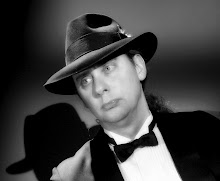The wind was now due southwest and blowing a gale to which a vessel close-hauled could have shown no more than a single close-reefed sail, but as we were going before it, we could carry on. Accordingly, hands were sent aloft and a reef shaken out of the topsails and the reefed foresail set...We sprang aloft into the top, lowered a girtline down by which we hauled up the rigging, rove the tacks and halyards, ran out the boom and lashed it fast, and sent down the lower halyards as a preventer.Excuse me, but WTF? Sounds like sailors were climbing up into the sails and doing all sorts of things, but exactly what I'm not sure. Still, does it really matter? The language is all crazy nautical, and makes me feel like I'm being sprayed by waves breaking over the bow, so finally I decided maybe I just needed to go along with it and that's what I did. I'll never be a sailor shipping out before the mast, but at least now after having finished the book I can talk like one. "Man the jib and reef up those tackles and halyards men! Ahoy maties! Don't be a soger!" See, I'm pretty convincing, right?
In the latter part of this book, the author describes the voyage home to Boston from California, two years after he shipped out. The eventful part is sailing around Cape Horn at the tip of South America in June, which is winter down there. Needless to say, it's tough going...lots of storms and snow and ice and rain and days that are five hours long before the sun sets. Frostbite was a real threat, but the sailors couldn't wear gloves because they couldn't hold on to the ropes very well when wearing them. And the author describes how their clothes were basically wet for a couple of months straight. It sounds pretty miserable, and it certainly was. It's kind of amazing that anyone survived these journeys. It makes one thankful for the Panama Canal.
Once around the Horn, several of the sailors get scurvy. This was in 1838, and it wasn't until 1932 that Vitamin C was discovered and the cause of scurvy (the lack of Vitamin C) was known. At the time of this voyage all that was known was that "fresh food" could cure scurvy (which meant plants, which contain Vitamin C). Meals on board the ship consisted of a piece of salted meat and some biscuit. Every meal, every day. Mmmmm. Fortunately, right before one of the sailors was about to die, they came across another sailing ship, who gave them onions and potatoes. Every sailor was given these daily, and all were cured. The author describes how they would just eat the onions like apples, and I'm thinking that that must have been one smelly ship.
Finally the ship makes it home to Boston, the sailors leave the boat, and the author goes back to Harvard to get his degree. The end. But wait...there's more! For the second to last chapter, the author goes into lawyer mode (he got a law degree) and starts going on and on about the rights of sailors, and the legal limits to a captain's authority, etc. And I have to say this was a pretty dull chapter, and out of character with the rest of the book. But then, there's one final chapter, added as a postscript 24 years after the book was initially published. This chapter tells of the author's trip, made in his mid-40s, back to California 24 years after his sailing days. He is blown away by what he sees...especially in San Francisco. When he was there in the 1830s there was no town, just an old broken down Mission. When he returns it's thriving metropolis, and there are other cities along the bay as well (Oakland, San Jose, Santa Clara), not to mention cities inland like Sacramento. The author is treated as a celebrity in San Francisco, his arrival being announced in the papers, because his was the only account of California written by an American before the Gold Rush days, so all the original pioneers read his book to get an idea of what it was like. He hangs out in San Francisco for awhile, no doubt going to dance clubs and cocktail lounges....maybe checking out the Museum of Modern Art He then takes a steamship down the California coast, visiting Santa Barbara and San Diego, before coming back to San Francisco and then heading to Hawaii. This chapter, written 24 years after the rest of the book is much more sentimental. He meets a lot of his old shipmates and acquaintances from his shipping days, and he's obviously very nostalgic for the past as are the people he meets. And I get the feeling it's not just the 24 years of time, but also the massive changes that occurred in California during that time that probably makes the past seem even more distant than it was, enriching and enhancing the nostalgia. At any rate it's a very moving chapter, and a fitting and poignant end to the book. This book is an American classic, and while it might not be for everyone, if you're interested in what the early 19th century sailing life was like, or if you're interested in California history, then this is well worth reading.

3 comments:
Congratulations on getting through that! How about something completely different now? A bit of Austen?
Jane Austen is coming up but not quite yet. Stay tuned!
Hi. I have a books about books blog, and this month I am doing books about the Great Books. Thought I'd let you know since that seems to be your theme.
Post a Comment